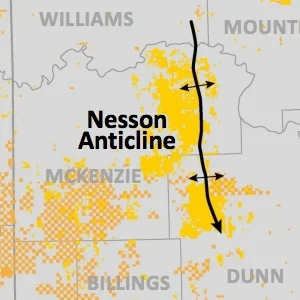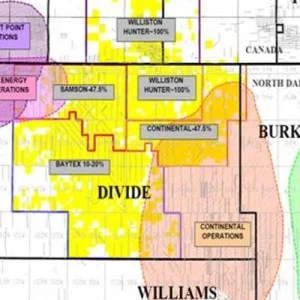The Bakken-Three Forks rig count increased by five to 189 rigs running across our coverage area by the end of last week. The NDIC notes 193 rigs are active in North Dakota, but around 23 of those are in the process of moving in and rigging up.
In recent Bakken news, Magnum Hunter announced last week that the company will sell its Divide County, North Dakota operated/non-operated properties and reallocate resources to core operations in the Appalachian Basin. Baytex Energy, Continental Resources, or Samson Resources are all likely buyers for the acreage.
Read more: Magnum Hunter Decides to Exit North Dakota Bakken
The U.S. rig count increased by 19 to 1,908 rigs running by the end of last week. A total of 316 rigs were targeting natural gas (three more than the previous week) and 1,588 were targeting oil in the U.S. (15 more than the previous week). The remainder were drilling service wells (e.g. disposal wells, injection wells, etc.). 191 rigs are running in the Williston Basin across MT, ND, and SD. 182 are in ND alone.
Not all rigs counted in our census are drilling for the Bakken, but it's close. The NDIC estimates 95% or more of activity in this region targets the Bakken and Three Forks formations.
Note: The NDIC reports 193 rigs are active in North Dakota. That is two more than Baker Hughes reports in the Bakken area, and 11 more than the company reports in North Dakota. The difference is likely accounted for in the number of rigs actually working, rigs that might not be serviced by Baker Hughes AND rigs in areas outside of the Bakken fairway. On any given week, a certain number of rigs are in route to the next well location or idle waiting to drill the next well. The NDIC notes that around 23 rigs are in the process of moving in and rigging up.
Bakken Oil & Gas Rigs
The number of oil rigs increased by five to 189 rigs running by the end of the week . WTI oil prices stayed relatively flat from the previous week, trading at $97.57/bbl on Friday afternoon. Williston Basin Sweet crude traded at $84.19/bbl on Aug. 7th. The WTI-Brent stayed flat, settling at ~$7 by the end of last week.
The natural gas rig count in the region held flat at zero. Natural gas futures (Henry Hub) were trading at $3.97/mmbtu by the end of last week. A little more than 10% of the production stream from the Bakken and Three Forks is attributable to natural gas and roughly half of that is NGLs.
McKenzie County continues to lead development with 65 rigs running. Dunn, Mountrail, and Williams counties are the only other counties with more than 20 rigs running each. View the full list below under the Bakken Drilling by County section.
Activity is dominated by horizontal drilling:
- 174 rigs are drilling horizontal wells
- 14 rigs are drilling directional wells
- 1 rig is drilling a vertical well
Bakken Oil & Gas News
Be sure to visit our Bakken Job Listings to search openings and come back weekly for updates or sign up for alerts - Daily or Weekly Email Alerts
Bakken Drilling by County






